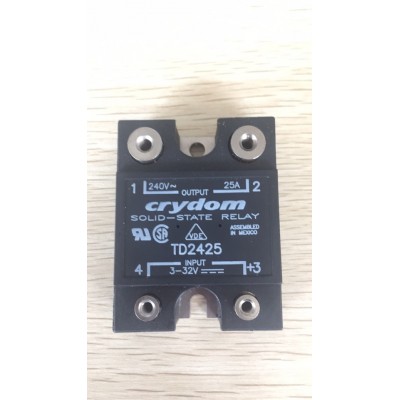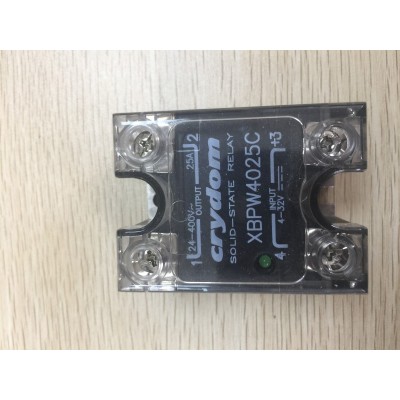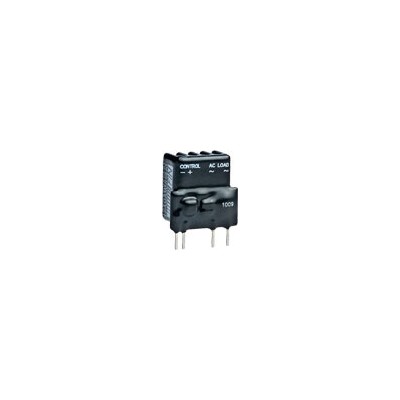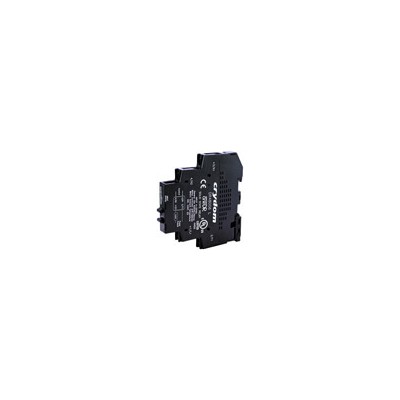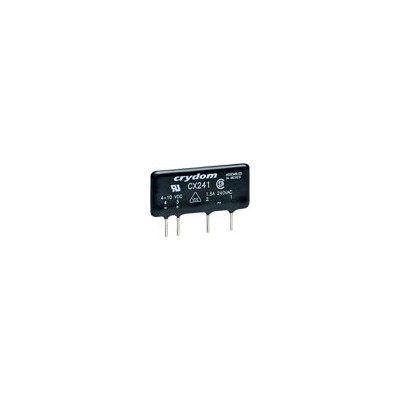| A | Absolute Encoder Type of encoder providing a unique binary word for each position. BEI Sensors offers absolute encoders (in single and multi-turn variations) with optical or magnetic sensing technology. Type of encoder providing a unique binary word for each position. BEI Sensors offers absolute encoders (in single and multi-turn variations) with optical or magnetic sensing technology.
Absolute Waveform(click on thumbnail to enlarge) 
Absolute waveform such as Gray Code, Natural Binary A binary output waveform which provides a unique parallel word code pattern for every position increment of the encoder shaft, corresponding to the resolution of the encoder. Typical parallel waveforms are Gray Code, Natural Binary, and Binary Coded Decimal AccuracyThis is the deviation between the actual position and the theoretical position of each bit edge. The base accuracy of an encoder is traceable to the encoding disc. Accuracy is different from and is not directly related to resolution. Angular ResolutionThe resolution of a rotary encoder expressed as a portion of a circle (i.e. a resolution of 360 cycles per turn, is the same thing as an angular resolution of 1 degree) |
| B | BandwidthThe upper usable frequency range of operation for an encoder. Usually determined by the encoder resolution, type of output driver, the type and impedance of the cable, and the type of output receiver. Binary Coded DecimalDecimal number represented in natural binary. For example, 360 would be represented as the 12-bit binary number 0011 0110 0000. BitIn incremental encoders a bit refers to 1 quantum of data or 1 increment of digital code. In absolute encoders a bit refers to the number of tracks which normally equate to the power of 2 of the final resolution, e.g., 8 bits equals 2 to the 8th power (256 positions), 12 bits equals 2 to the 12th power (4096 positions), etc.  Blind Shaft EncoderA rotary encoder in which the rotor portion of the encoder is tubular with a shaft cap on one end of the tube. A mating shaft can pass into the encoder housing, however not through the full length of the encoder. |
| C | Cable - Data Cable Reels High quality custom data cable reels from BEI consist of low capacitance twisted pairs; provide excellent noise immunity; and are used with a variety of sensors, including encoders, proximity sensors, flow meters, and pressure sensors. High quality custom data cable reels from BEI consist of low capacitance twisted pairs; provide excellent noise immunity; and are used with a variety of sensors, including encoders, proximity sensors, flow meters, and pressure sensors.
Cable-Extension Transducersee Draw Wire Sensor ComplementThe inverse of a digital signal. When a data channel transitions from the HI state to the LO state, it's complement will transition from LO to HI. Complementary output signals, when used with a differential receiver can utilize common mode noise rejection (CMNR) to reduce noise susceptibilit  ConnectorsHigh quality connectors from BEI are sealed conductors and known as screw-on, military-style connectors; they accept up to 16 gage wire and have a built-in clamping strain relief; as well as solder cups on the back of the pins; they also have an environmentally-sealed backshell for waterproofing. Count MultiplicationA technique of using leading and trailing edges of incremental output data channels to increase the resolution of the encoder. This technique, also called quadrature detection, results in a net multiplication of the base count by a factor of four. CPTCounts per turn, or Cycles per turn (see Resolution). CPRCycles per Revolution (see Resolution) |
| D | Draw Wire Sensor A device that provides digital position and speed information by utilizing a flexible cable, a spring-loaded spool, and an incremental optical encoder to precisely measure linear position. Cable extension transducers are also known in the industry as linear cable transducer, draw wire transducers, yo yo pots, linear position string pots, string encoders, and string potentiometers. A device that provides digital position and speed information by utilizing a flexible cable, a spring-loaded spool, and an incremental optical encoder to precisely measure linear position. Cable extension transducers are also known in the industry as linear cable transducer, draw wire transducers, yo yo pots, linear position string pots, string encoders, and string potentiometers.
Dual Encoder ChannelsWith incremental encoders, a standard convention is to output a second data channel of position information. For simplicity, these dual channels are usually called the A channel and the B channel. A and B channels are arranged with a preset offset of 1/4 of a cycle, or quadrature. This means that the A channel goes from LO to HI and then, while it is still HI, the B channel goes from LO to HI. Shortly after the A channel goes from HI to LO, the B channel goes from HI to LO. This relationship is called A leads B. |
| E | Edge DetectionAlso called quadrature detection. A technique used in incremental quadrature encoders whereby the controller counts the edge transitions on the encoder signals. Counting the transitions on a single channel doubles the resolution (two transitions for every cycle). Counting transitions on two channels in quadrature results in four times the base resolution. EncoderAn electro-opto-mechanical sensor that attaches to a shaft and provides angular position information to a counter or controller. The purpose of an encoder is to act as a position or speed feedback device as part of an integrated control system. Excess Gray CodeGray code that does not begin at zero.  Explosion Proof Rotary EncoderAn encoder in which the housing has been designed to contain an explosion in a hazardous environment. Explosion proof ratings are provided and tested by international standards organizations. BEI Sensors offers explosion proof rotary encoders with incremental or absolute output. Express Encoders®A trademark for BEI encoders indicating standard encoders that are available with a short lead time. |
| G | Gray CodeA common absolute encoder output format based on binary counting, but it avoids the multiple transition problem entirely, It differs from Natural Binary in that only one bit can transition at a time. |
| H | Hall Effect Sensor Uses a magnetized internal disc is magnetized with a single pole pair that is attached to the sensor’s rotor. An ASIC is detects the change in the direction of the magnetic field as the disc rotates above it. These changes in magnetic field are converted to an analog signal that is ratiometric (proportional) to the angle of the rotating disc. Hall effect sensors are typically used to resolve angular position with an analog output. Uses a magnetized internal disc is magnetized with a single pole pair that is attached to the sensor’s rotor. An ASIC is detects the change in the direction of the magnetic field as the disc rotates above it. These changes in magnetic field are converted to an analog signal that is ratiometric (proportional) to the angle of the rotating disc. Hall effect sensors are typically used to resolve angular position with an analog output.
Hollow Shaft Encoder A rotary encoder in which the rotor portion of the encoder is tubular. The inner diameter of the rotor tube is sized to accept and clamp to standard shaft sizes. Hollow shaft encoders typically are offered as blind shaft or through shaft configurations. A rotary encoder in which the rotor portion of the encoder is tubular. The inner diameter of the rotor tube is sized to accept and clamp to standard shaft sizes. Hollow shaft encoders typically are offered as blind shaft or through shaft configurations.
HysteresisA dead band purposely introduced in the encoder electronics. This helps to prevent transition ambiguities if the system happens to dither on a transition. |
| I | Incremental EncoderA type of encoder signal providing logic states "0" and "1" alternately for each successive cycle of resolution. BEI Sensors offers incremental encoders with optical or magnetic sensing technology. (click on thumbnail to enlarge) Incremental Waveform
Incremental Waveform for optical, rotary encoders. Two series of square wave cycles offset by 90 degrees whose period is determined by the resolution and rotational speed of the encoder. Typically a once-per-revolution index pulse as well as the inverse of the index and data lines are also part of the standard waveform of an incremental encoder.
IndexA single, separate output on an incremental encoder providing one count per revolution. This is often gated to one or both of the count channels, so that the index maintains the same relationship with the count channels on every revolution. InterpolationAn electronic multiplication technique for increasing encoder resolution. Certain interpolation techniques can also increase the encoder bandwidth. See also, Edge Detection. IP RatingThe initials IP stand for Ingress Protection, as defined by the International Electrotechnical Commission (international standard IEC 60529) "Degrees of protection provided by enclosures". The standard outlines a classifcication system for the sealing effectiveness of enclosures of electrical equipment against solid objects into the equipment. The first digit is the degree of dust sealing and the second digit is the degree of water sealing. For example, an  IP66 rating would mean the unit is totally protected from dust and is sealed against powerful water jets from any direction. IP66 rating would mean the unit is totally protected from dust and is sealed against powerful water jets from any direction. |
| L | Line CountThis is often used to mean resolution. It refers to the number of lines that are contained in the code pattern of the code disk on an incremental encoder. Line DriverA type of encoder output. This is the general term used for a differential output driver intended for use with a differential receiver. Line drivers can be used to source or sink current, have a low output impedance and, when used with a differential receiver, have a high noise immunity, even when used with particularly long cable runs. Linear Cable TransducerSee Draw Wire Sensor |
| M | Magnetic Encoder Use changes in magnetic fields to detect movement utilizing a disc that has been magnetized with multiple, north/south pole pairs that are in the form of radial lines or patterns. An ASIC detects alternating north and south poles as the disc is rotated past it. Internal electronics convert it into a digital electrical signal that is then passed through the device’s output. Magnetic encoders are typically used to detect rotational speed and direction with a digital output Use changes in magnetic fields to detect movement utilizing a disc that has been magnetized with multiple, north/south pole pairs that are in the form of radial lines or patterns. An ASIC detects alternating north and south poles as the disc is rotated past it. Internal electronics convert it into a digital electrical signal that is then passed through the device’s output. Magnetic encoders are typically used to detect rotational speed and direction with a digital output
Motion ControlRefers to the use of prime movers (motors), feedback (encoders) and signal processing (controllers), generally in a closed loop system to automate a process. |
| N | Natural Binary CodeA common absolute encoder output format, it is constructed so the code counts up using natural sequence of binary counting. Example, the counting goes 000, 001, 010, 011, 100, and so on. The drawbacks to using this code sequence is that at several count positions, the code will have transitions on multiple bits simultaneously. Because of the normal variations caused by gate delays, line impedances, and other factors, the actual transitions don't occur simultaneously. Reading data during one of these times could result in an erroneous reading. Control systems can overcome this issue by taking multiple readings. |
| O | Open CollectorA type of encoder output driver that utilizes an NPN transistor. Electrically it is a current sink and requires a pull-up resistor from the supply voltage to the signal high line. This resistor can be internal or external to the encoder. Optical Encoder An optical encoder is an electro-opto-mechanical sensor that attaches to a shaft and provides angular position information to a counter or controller. The optical encoder uses a sensing technology that relies on the interruption of light to detect the encoder's movement. An optical encoder is an electro-opto-mechanical sensor that attaches to a shaft and provides angular position information to a counter or controller. The optical encoder uses a sensing technology that relies on the interruption of light to detect the encoder's movement.
|
| P | Parallel Absolute OutputEach bit of the data word is output in parallel on a separate data line. For example, an 8-bit parallel output would have eight distinct data lines. Together these eight lines are capable of representing up to 256 unique positions. Resolution for absolute encoders is expressed in bits and counts, where each successive bit increases the resolution by a factor of two. 10 bits = 210 = 1,024 counts per revolution. Pulses per Revolution (see Resolution). Position EncoderAnother term for a rotary optical encoder. Position SensingFor encoders, this is the detection of the angular position of the shaft relative to a known reference, usually an index pulse. Position ServoA closed loop control system in which position, rather than velocity or acceleration is the control parameter. |
| Q | QuadratureTwo incremental output channels that are deliberately out of phase by 90 electrical degrees. The relationship between the two channels is set within the encoder. A typical quadrature relationship would be described as: A leads B for counterclockwise (CCW) rotation of the input shaft. Quadrature allows for discrimination between direction of movement (CW versus CCW), error detection in high vibration environments and higher resolution by using edge detection. |
| R | RepeatabilityThe deviation of the actual encoder position produced between subsequent identical code readings. The ability to repeat exact bit placements. Repeatability is unrelated to resolution and is usually 4 to 10 times better than accuracy. ResolutionThe number of bits or words contained in the complete code. For incremental and tachometer encoders, resolution is defined as cycles per revolution. For absolute single turn encoders, it is called counts per turn. Multiturn encoders are specified as positions per turn of the input shaft and the number of turns of the internal gear ratio. Resolution is not the same as accuracy. Rotary Optical EncoderSee Optical Encoder |
| S | Serial Synchronous Interface (SSI)SSI is a means to transmit encoder position information on a single pair of conductors instead of one conductor per bit. A clock pulse train from a controller tells the encoder when to send out data bits: one bit of position data is transmitted to the controller per one clock pulse received by the sensor. Shaft SealA flexible rotary sealing device incorporated into the encoder shaft that prevents or limits environmental intrusion of dust and moisture  Shock Proof Rotary EncoderAn encoder which has been internally shock-mounted in a heavy duty housing to allow its use in extremely demanding environments such as steel mills, pulp and paper processing plants, fluidized beds, etc. BEI Sensors offers shock proof encoders with incremental or absolute output. StateLogic level (HI, 1, true) (LO, 0, false). String Encodersee Draw Wire Sensor String Pot or Potentiometersee Draw Wire Sensor |
| T | Tachometer EncoderA type of incremental encoder that generally uses only one data track for speed indication.
 Through Shaft EncoderA rotary encoder in which the rotor portion of the encoder is tubular and can have a mating shaft pass though the full body of the encoder housing.
TransitionChange of state of the digital word. This occurs at the bit or word edge. |
| Y | Yo Yo Potsee Draw Wire Sensor |



 Type of encoder providing a unique binary word for each position. BEI Sensors offers absolute encoders (in single and multi-turn variations) with optical or magnetic sensing technology.
Type of encoder providing a unique binary word for each position. BEI Sensors offers absolute encoders (in single and multi-turn variations) with optical or magnetic sensing technology.

 High quality custom data cable reels from BEI consist of low capacitance twisted pairs; provide excellent noise immunity; and are used with a variety of sensors, including encoders, proximity sensors, flow meters, and pressure sensors.
High quality custom data cable reels from BEI consist of low capacitance twisted pairs; provide excellent noise immunity; and are used with a variety of sensors, including encoders, proximity sensors, flow meters, and pressure sensors.
 A device that provides digital position and speed information by utilizing a flexible cable, a spring-loaded spool, and an incremental optical encoder to precisely measure linear position. Cable extension transducers are also known in the industry as linear cable transducer, draw wire transducers, yo yo pots, linear position string pots, string encoders, and string potentiometers.
A device that provides digital position and speed information by utilizing a flexible cable, a spring-loaded spool, and an incremental optical encoder to precisely measure linear position. Cable extension transducers are also known in the industry as linear cable transducer, draw wire transducers, yo yo pots, linear position string pots, string encoders, and string potentiometers.
 A rotary encoder in which the rotor portion of the encoder is tubular. The inner diameter of the rotor tube is sized to accept and clamp to standard shaft sizes. Hollow shaft encoders typically are offered as blind shaft or through shaft configurations.
A rotary encoder in which the rotor portion of the encoder is tubular. The inner diameter of the rotor tube is sized to accept and clamp to standard shaft sizes. Hollow shaft encoders typically are offered as blind shaft or through shaft configurations.
 IP66 rating would mean the unit is totally protected from dust and is sealed against powerful water jets from any direction.
IP66 rating would mean the unit is totally protected from dust and is sealed against powerful water jets from any direction. Use changes in magnetic fields to detect movement utilizing a disc that has been magnetized with multiple, north/south pole pairs that are in the form of radial lines or patterns. An ASIC detects alternating north and south poles as the disc is rotated past it. Internal electronics convert it into a digital electrical signal that is then passed through the device’s output. Magnetic encoders are typically used to detect rotational speed and direction with a digital output
Use changes in magnetic fields to detect movement utilizing a disc that has been magnetized with multiple, north/south pole pairs that are in the form of radial lines or patterns. An ASIC detects alternating north and south poles as the disc is rotated past it. Internal electronics convert it into a digital electrical signal that is then passed through the device’s output. Magnetic encoders are typically used to detect rotational speed and direction with a digital output An optical encoder is an electro-opto-mechanical sensor that attaches to a shaft and provides angular position information to a counter or controller. The optical encoder uses a sensing technology that relies on the interruption of light to detect the encoder's movement.
An optical encoder is an electro-opto-mechanical sensor that attaches to a shaft and provides angular position information to a counter or controller. The optical encoder uses a sensing technology that relies on the interruption of light to detect the encoder's movement.

